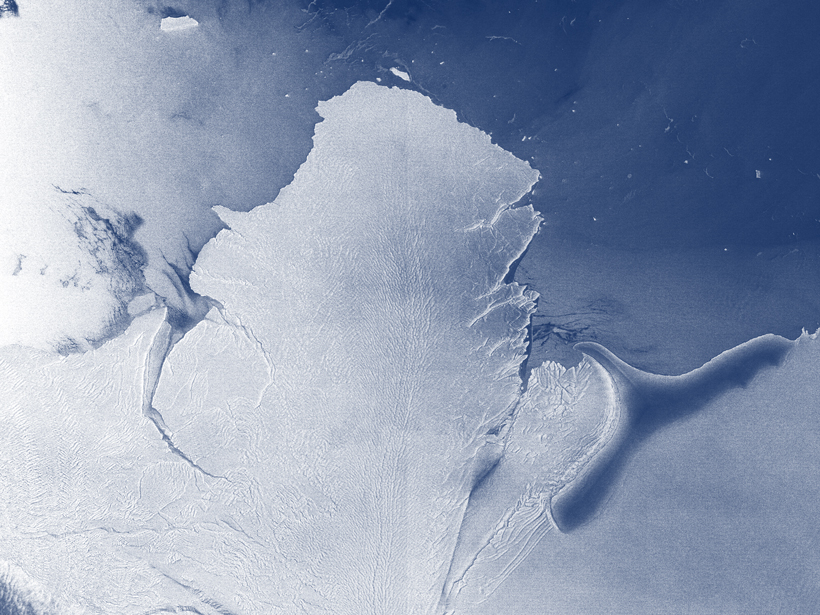Recent studies have shown that large parts of the Antarctic Ice Sheet may be imperiled by the loss of vast ice shelves that abut the continent and slow the flow of ice into the sea. These ice shelves float on seawater, which melts them from below, but this process has proved difficult to observe and quantify. Instead, most efforts employ an indirect approach: Satellite data are used to track changes in the surface elevation at fixed points, and then all other contributing factors are subtracted out, leaving behind only the effects of basal melting.
Moholdt et al. propose an improvement on this technique—they tracked elevation changes at the same spots on the moving ice shelf rather than fixed geographic coordinates. This approach removes the effect of changes in elevation caused by motion of the rough ice surface. The researchers demonstrated that their approach reduced the noise in estimates of surface elevation changes by about half and improved calculations of basal melt rates. The main limitation of their approach is that it requires ample satellite data, which is not presently available at all locations of interest.
The researchers used this approach to estimate basal melting for the two largest Antarctic ice shelves, the Ross and Filchner-Ronne, for the period between 2003 and 2009. They found that the Ross Ice Shelf lost about 50 gigatons of ice per year and the Filchner-Ronne lost about 125 but that these losses were approximately compensated by snowfall and ice dynamics, leading to steady state conditions for both ice shelves.
The main uncertainty in their calculations arose from the rate of compaction of snow as it turned into ice, which affects surface elevation but can be hard to accurately estimate. The researchers propose using compaction rates for nearby ice that is grounded on bedrock and does not experience changes due to basal melting. (Journal of Geophysical Research: Earth Surface, doi:10.1002/2014JF003171, 2014)
—Julia Rosen, Freelance Writer
Citation: Rosen, J. (2015), Researchers track moving ice shelves to estimate Antarctic ice loss, Eos, 96, doi:10.1029/2015EO029675. Published on 14 May 2015.
Text © 2015. The authors. CC BY-NC 3.0
Except where otherwise noted, images are subject to copyright. Any reuse without express permission from the copyright owner is prohibited.

